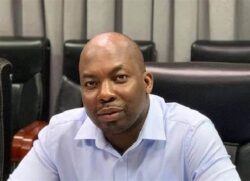– How to conduct a Situational Analysis
Start with changing behaviours, not mindsets. It is much easier to ‘act your way into new thinking’ than to ‘think your way into new actions.’ Recurring and consistent performance results from behaviour change leading to lasting changes in the way people feel, think, and believe in the long run. ————Jon Katzenbach, Author and Consultant
A situation analysis or environmental analysis is an important first step in the social and behaviour change communication change process. It involves the systematic collection and examination of health and demographic data, research findings and other contextual information to identify and understand the health problem at hand. It examines the current state of the health problem and the social, economic, political, and health context in which the health problem exists and creates a vision for the social and behaviour change communication programme. A complete situational analysis gathers information from four areas:
- The problem, its severity and its causes.
- The people affected by the problem (potential audiences).
- The broad context in which the problem exists.
- Factors inhibiting or facilitating behavior change.
Reason for Situational Analysis
A situation analysis guides the identification of priorities for a social and behaviour change communication intervention and informs all the steps involved in the process. It establishes a clear, detailed and realistic picture of the opportunities, resources, challenges and barriers regarding a particular health issue or behaviour. The quality of the situation analysis will affect the success of the entire social and behaviour change communication effort.
Who conducts Situational Analysis and its duration
A small, focused team should conduct the situation analysis. Members should include communication staff, health and social service staff as well as research staff.
Throughout the data collection process, team members should also consider how to engage stakeholders including opinion leaders, service providers, policy makers, partners, and potential beneficiaries. Ways to obtain stakeholder input include in-depth interviews, focus group discussions, community dialogue, small group meetings, taskforce engagement or participatory stakeholder workshops.
A situation analysis should be conducted at the beginning of a programme or project, before developing an social and behavour change communication strategy. Completing a situation analysis can take up to two weeks. Consider the size of the project, scope of the literature review, how much data is available and easily accessible, and whether additional stakeholder or audience input is needed. Allow for additional time if formative research is needed to fill in any gaps that may exist in the literature. The following steps will be crucial to guide the process:
Establish the health issue
For many health programmes or strategies, a health problem is identified early, for example when a funder sends a request for child health projects or when a government ministry requests special technical assistance for HIV prevention programmes. Other times, an organization may need to identify a broad health problem that needs to be addressed in a specific geographic area. You can do this by reviewing available health and demographic data, test results, research results, and other available information to identify the primary health problem. During the review, pay attention to the following types of information:
- Geographic areas where high levels of mortalityand morbidity exist because of a health issue.
- The prevalenceor incidence of that health issue.
- Population segments that are most heavily impacted by the health issue.
- The existing priorities of the government.
- The donor landscape.
- Health trends from one point in time to another.
Develop a problem statement
Successful SBCC strategies focus on one specific issue at a time. Addressing too many issues or too general an issue, such as overall reproductive health, can be confusing. To help focus the situation analysis, develop a focused problem statement. The problem statement draws lenses on the health issue like family planning and indicates who is affected and the location of the affected party. A well-written problem statement has the added benefit of providing specific search terms to use in collecting documents for the desk review.
To develop a problem statement, it may be helpful to first have all of the team members state the problem in their own words. Then, as a group, write a clear one- to two-sentence problem statement that reflects the team’s common understanding and that can guide the data collection and analysis on that specific health issue.
Craft a Shared Vision
A vision provides a picture of what the situation will look like when the social and behaviour change communication effort is completely successful and will anchor the campaign intervention by stating what the programme hopes to influence. A good vision statement provides direction, communicates enthusiasm and fosters commitment and dedication.
A good vision should:
- Be Ambitious – go beyond what is thought likely in the near term.
- Be Inspiring and Motivating– call to mind a powerful image that triggers emotion and excitement, creates enthusiasm and poses a challenge.
- Look at the big picture– give everyone a larger sense of purpose.
To guide the team during the initial data collection and analysis, draft a provisional vision statement, which will later be shared with stakeholders to create a shared vision for the communication effort. One approach could see each team member individually imagining the future the person wants to see and draws that image on a paper. Team members share the pictures with each other and discuss similarities and differences. The team agrees on the elements that inspire them, adding new elements that arise from the discussion, and draws a new picture that represents the vision of the entire team. The team then translates the picture into words to create a vision statement.
Once the team has conducted an initial situation analysis, the provisional vision will be shared with stakeholders involved in the communication strategy design process and agreed upon. This can be done through a stakeholder workshop or informal meetings where stakeholders provide feedback and suggest changes to the provisional vision statement. The resulting shared vision statement should clarify what is important for all stakeholders and guide the strategy design and development process.
Conduct a Desk Review
To better understand the health issue and to address the problem, the team needs to conduct a desk or literature review. To start this process, review the vision and problem statements and divide them up into concepts. Develop a list of keywords related to those concepts. Brainstorm additional synonyms and related keywords for each concept. These keywords will be the search terms used to find relevant literature.
Decide the Review Scope
Determine how many studies and how comprehensive the review should be. Decide on dates, studies to be collected, and the best databases or other data sources, such as partners to target the search. Decide whether the review will include only peer-reviewed literature or whether it will extend to grey literature.
Identify the Relevant Information
Use the keywords or search terms to look for literature that fits within the scope of the review, including existing quantitative and qualitative data about the problem and the people affected.
Look for both national and local data using online searches, local library resources, and partner resources. Good sources include:
- Large-scale, population-level studies
- National policies and strategies to address the issue
- Reports on national, regional, district or health facility-level indicators
- Published research on the topic
- Bibliographies and references of relevant research studies
- Unpublished studies conducted by programmes working in the area
- Stories and reports in the media
- Census research
- Media reports
- Anecdotes and narratives from communities
Data Review and Organization
Focus only on information that will help the project team address the problem and avoid including information that is not as relevant for social and behaviour change communication strategy. Organize and summarize the findings in a way that makes them easy to use. While reviewing the data, organize the studies that contain information on potential audiences for the social and behaviour change communication interventions. Some studies provide information on what people think, feel and do about the health problem, what influences their behaviour and the communication channels they use.
A desk review is complete when no new information is discovered and the articles introduce similar arguments, methodologies, findings, authors and studies. Write a list of questions that are not adequately answered in the available data and questions that arise from the data. For example, the team may need additional information on local practices or beliefs about the health issue. These are gaps that stakeholders might be able to address during a stakeholder workshop.
Analyze the data and summarize the findings
Look closely at the information collected. Determine the commonalities and conflicts among the studies. Decide if the information is valid and important in addressing the health issue. A good way to summarize the findings is to write a situation analysis report, which can be shared with the larger project team and relevant stakeholders.
Fill the Existing Gaps
Focus group discussions and in-depth interviews with members of potential audiences can help fill any information gaps that remain after the desk review. One way to fill gaps is to hold a stakeholder workshop. Other ways to fill gaps include holding in-depth interviews and focus groups with key informants or potential audience members; and conducting facility surveys in health, social service, religious or other facilities.
Credit
About the Writer
Ebenezer is a Development Communicator with experience in International Development Consulting, Banking, SME co-creation & development research and innovative financing. You can reach him via [email protected] & [email protected]










